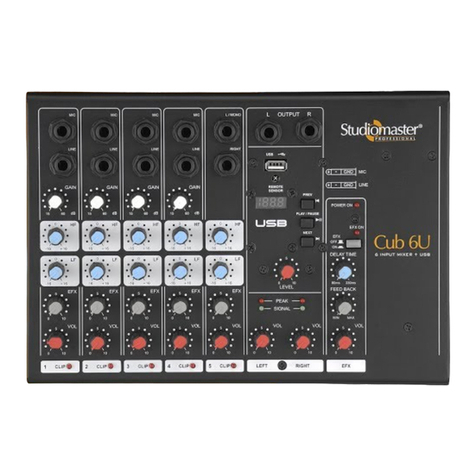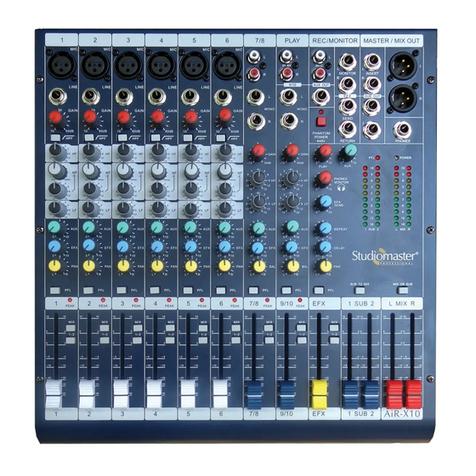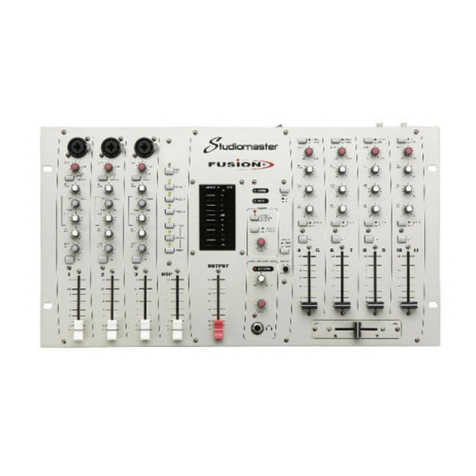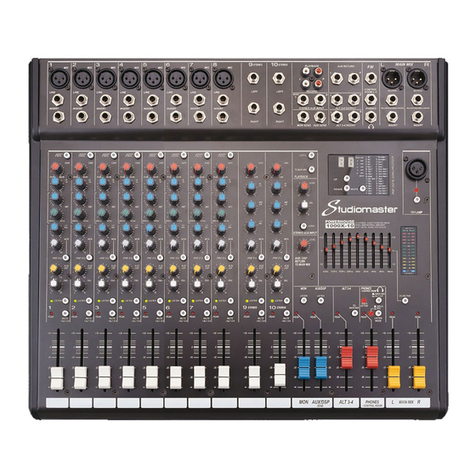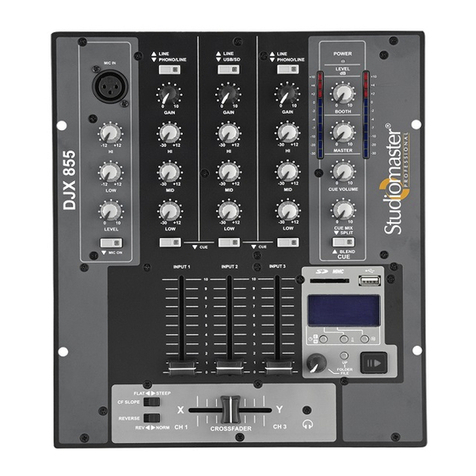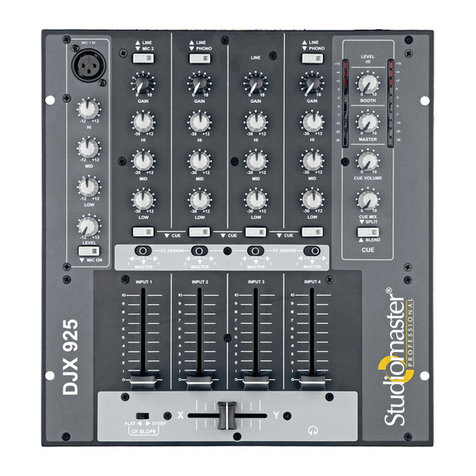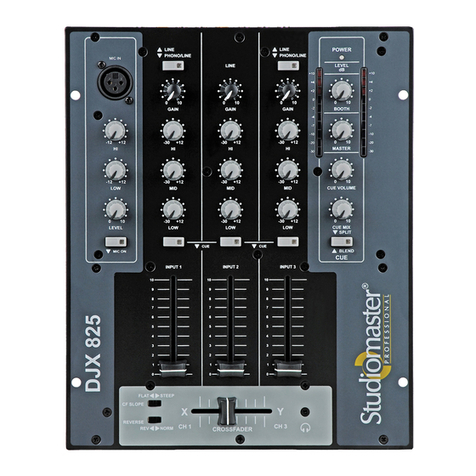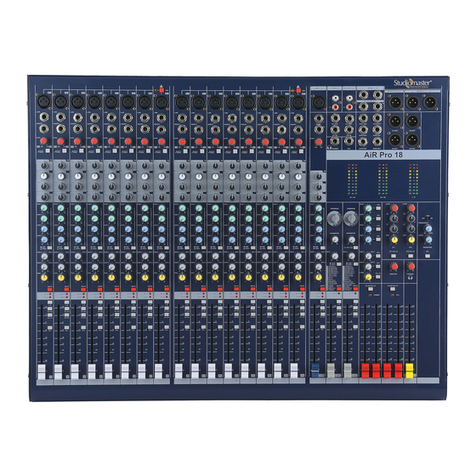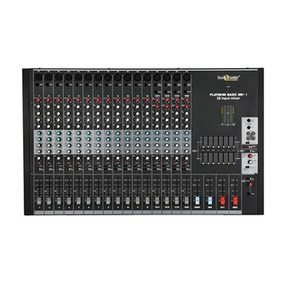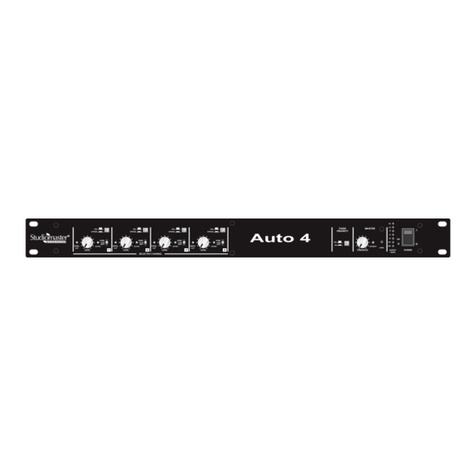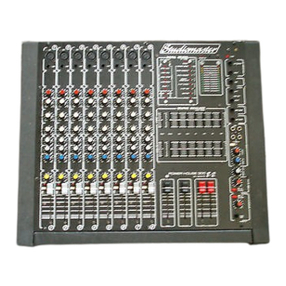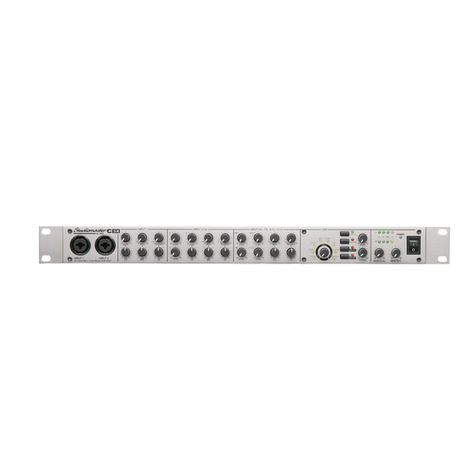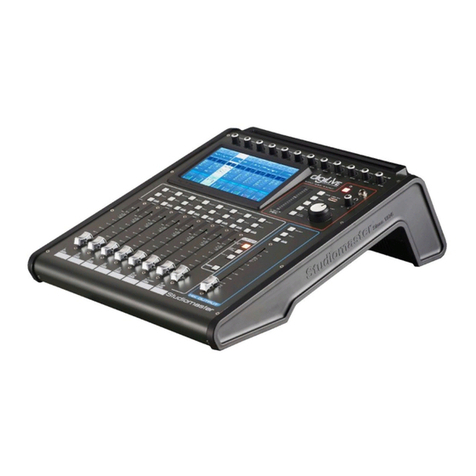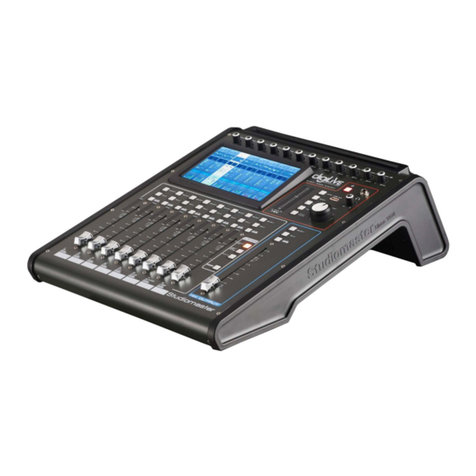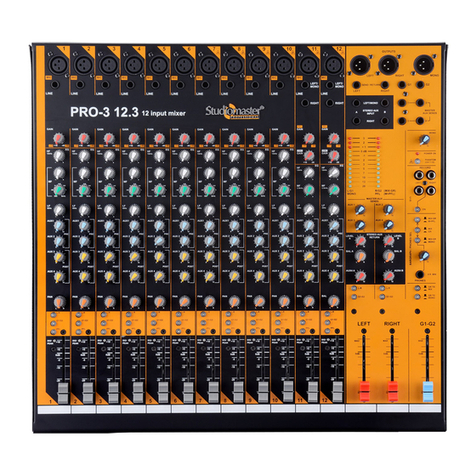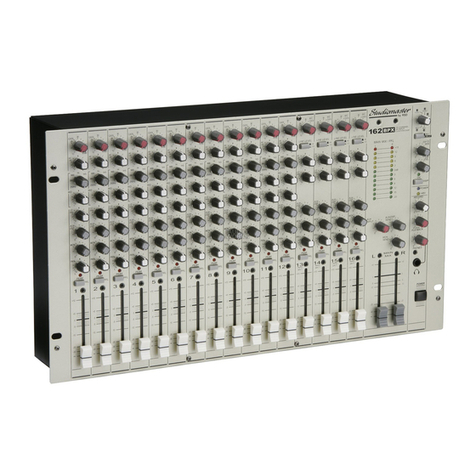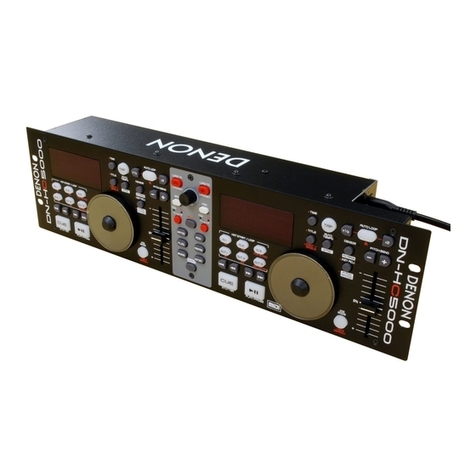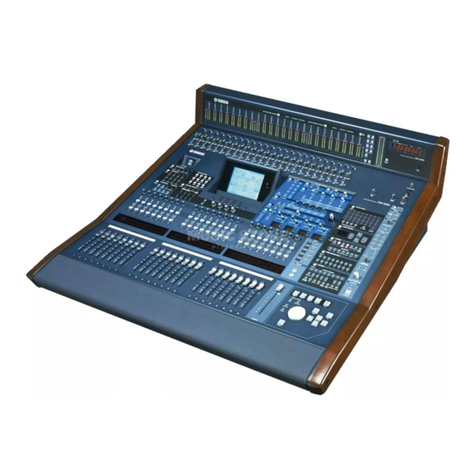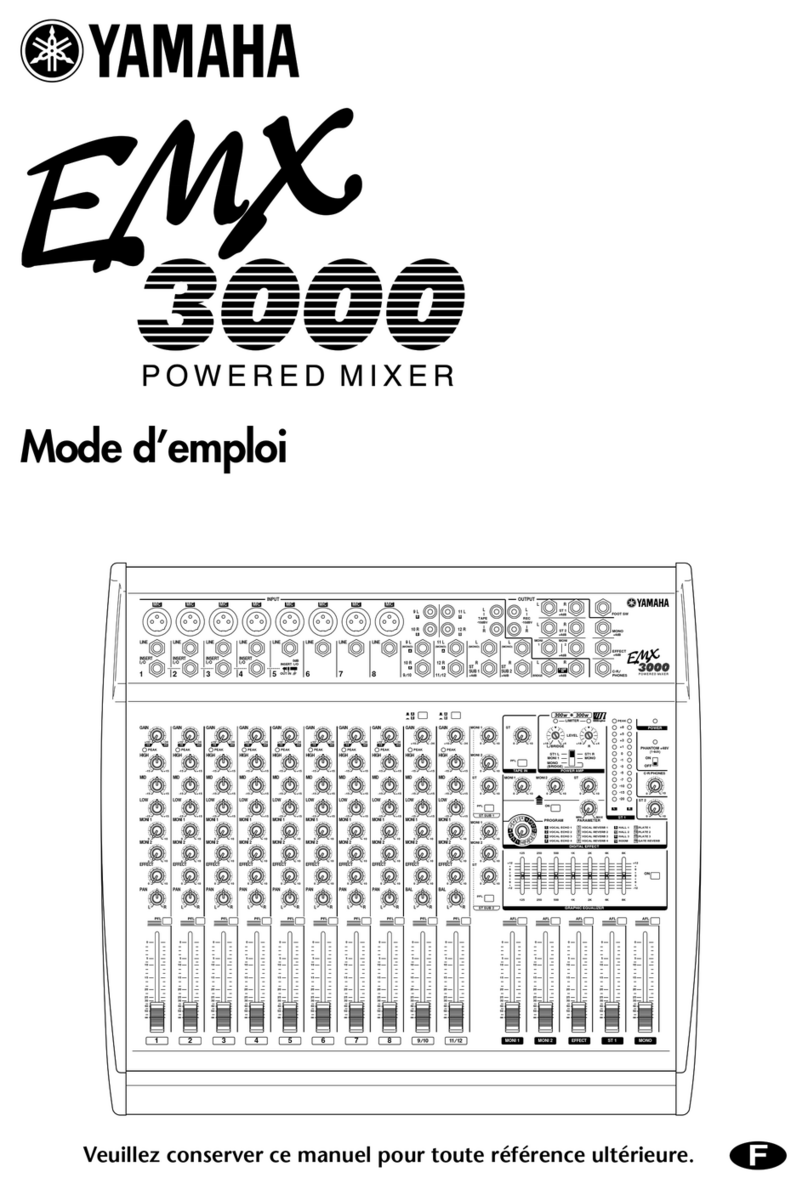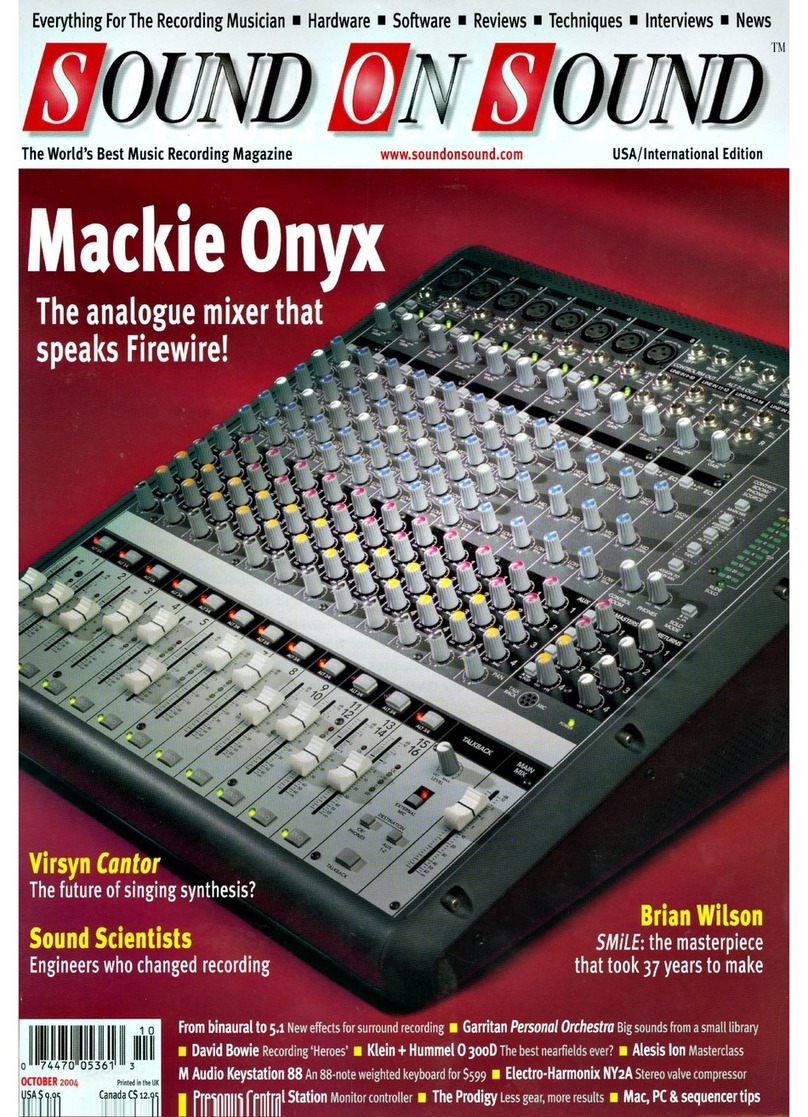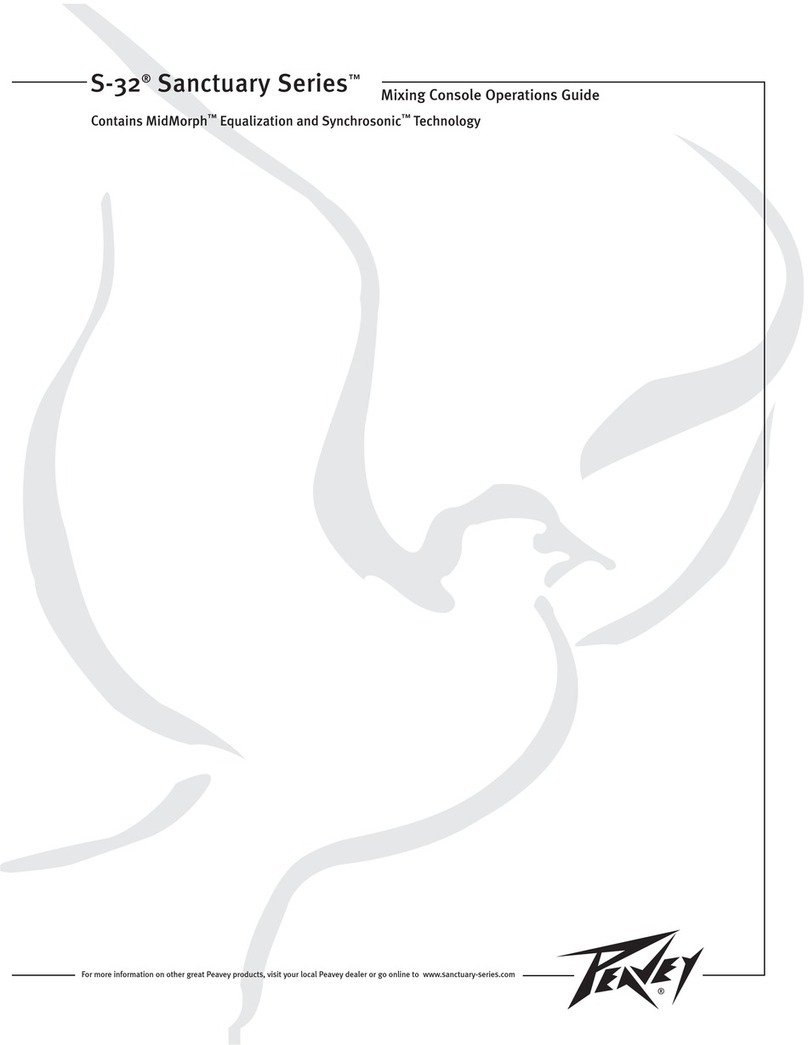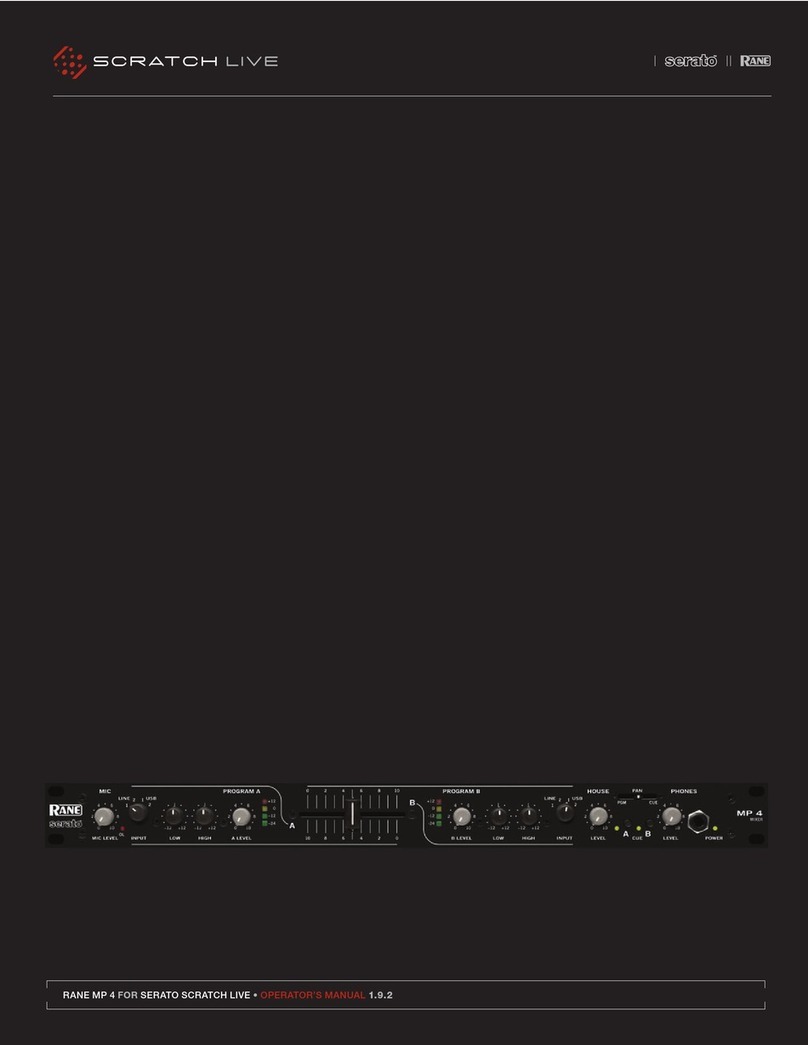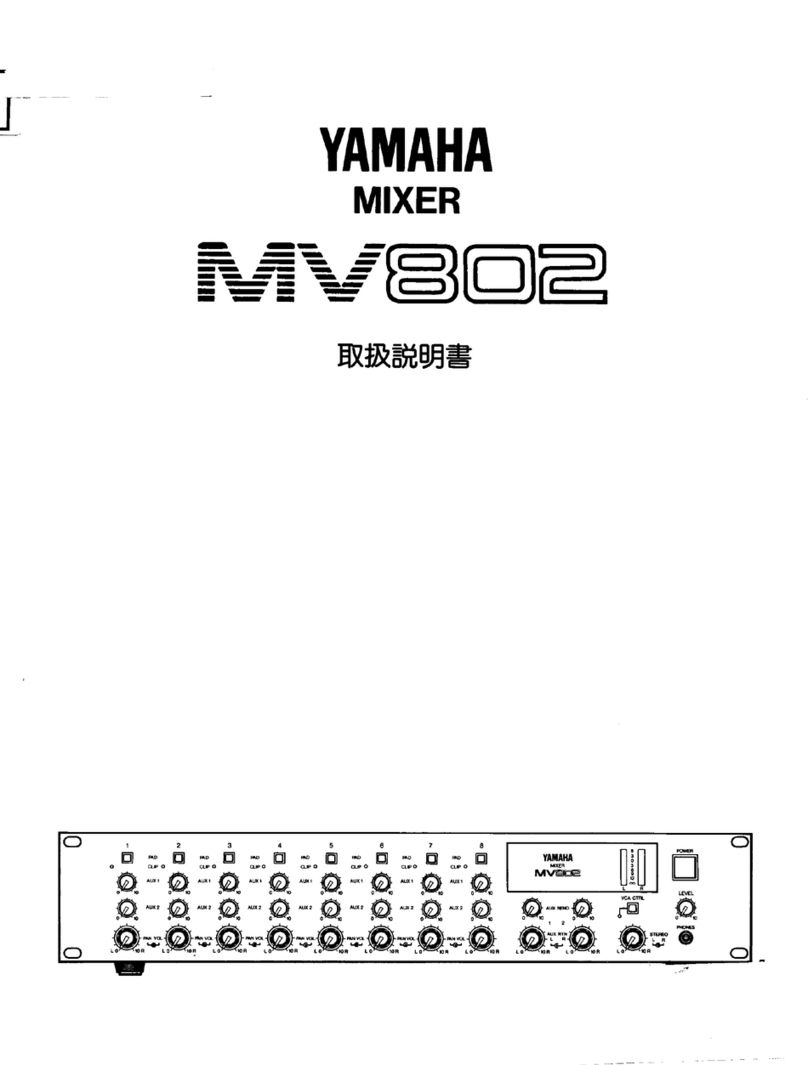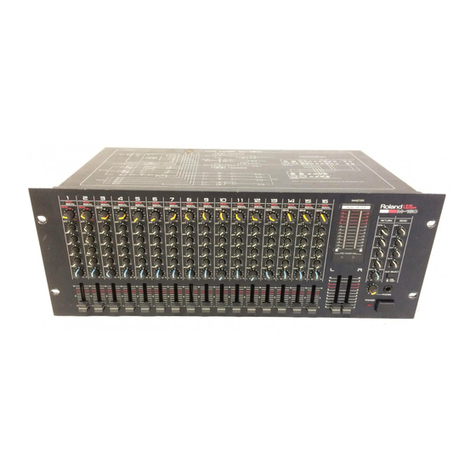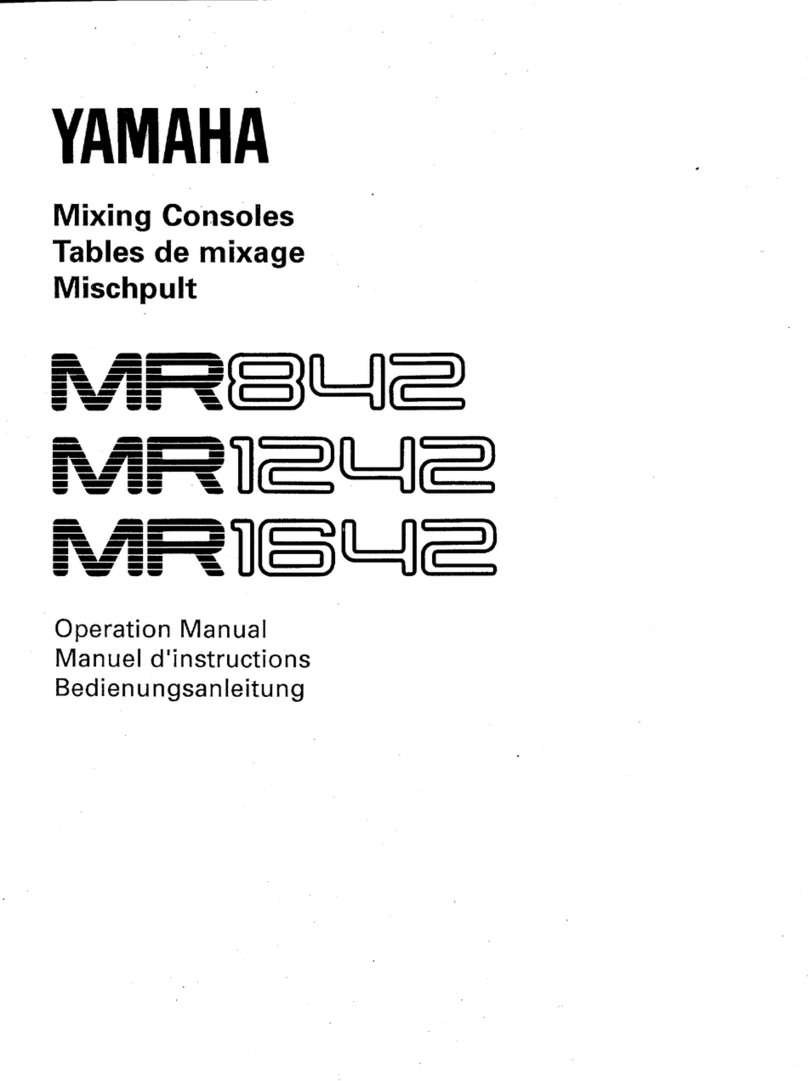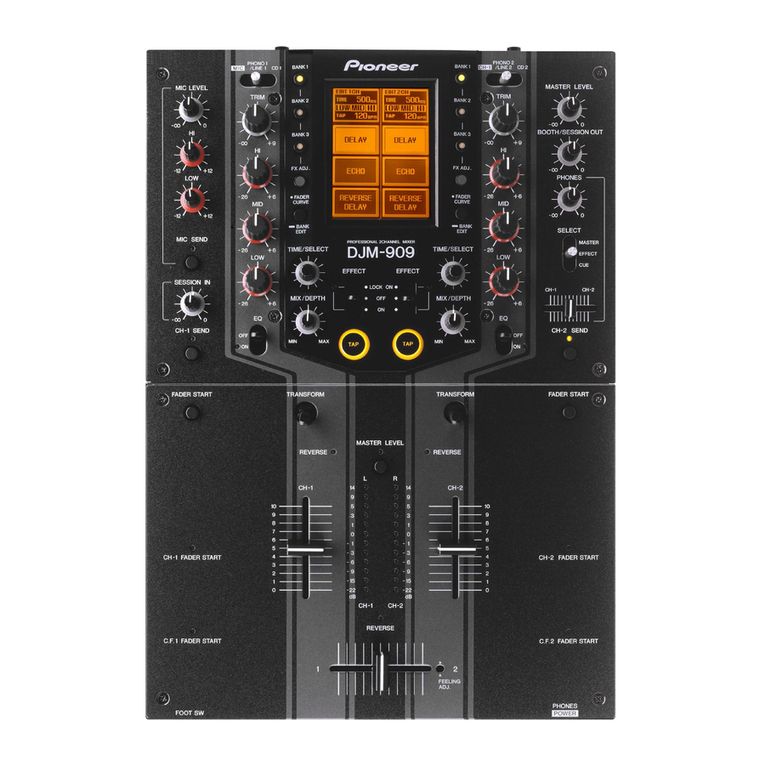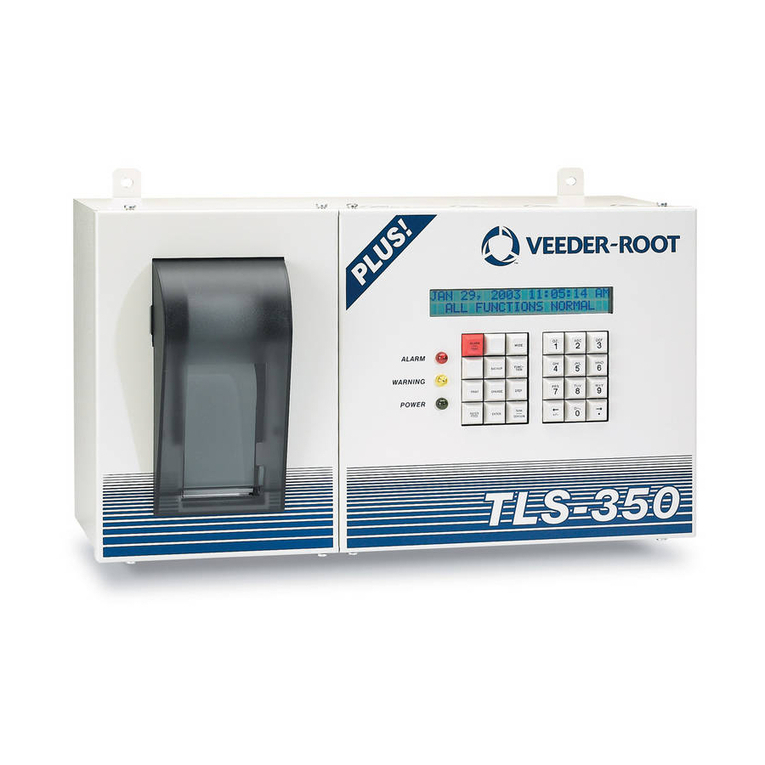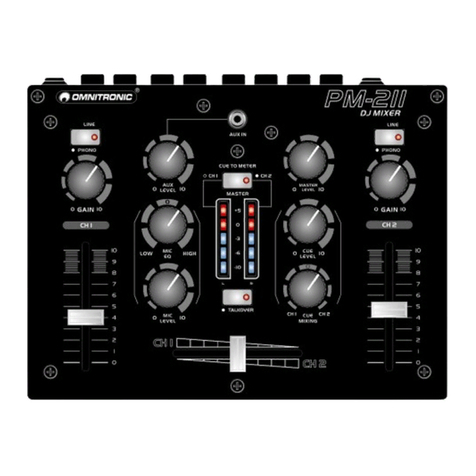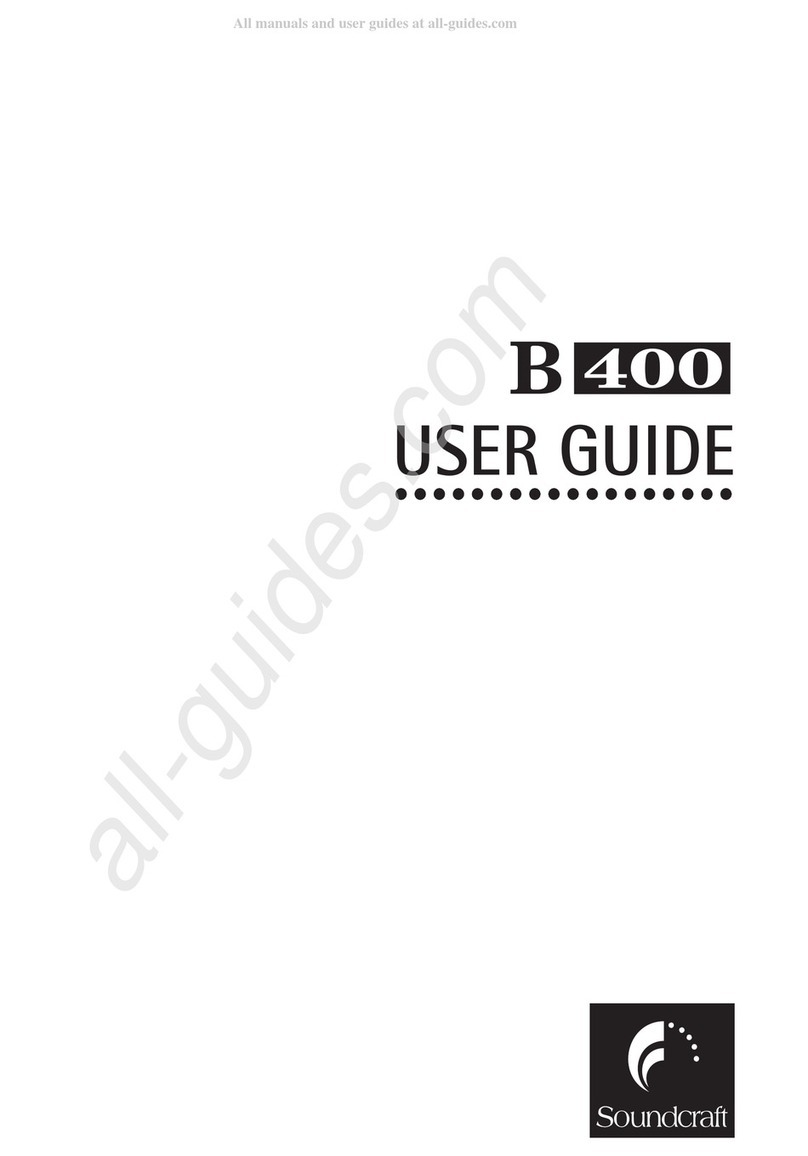Each input channel consists of the lollowing con-
'AUX2
trolsandleature.: Thiscontrol,likeAux 1, isnormatty post ta(/er. Au'2
MIC LINE SWITCH however, is p'o~ided with a pre-fade, sele<:tor switch for
This swilch allows lor any channel fo be used with eifher bussing
ot
pre-tader sigr1als fa fhe Aux 2 masler secllon
a microphone le~el Olpul (balanced low impedance -200 'AUX 3
ohm) 0' a line le~el input (unbalanced 600 ohm.) lsee The Au,iliary 3 conlrol allows for bussing ot a pre-fader
page 25 Ior details) signaltolheAu,3maslerse{:tionPrefade,signalsare
normallyusedlorstagemonilor,studiotoldbackorcue-
PAD SWITCH
Thisswitchprovidesa20dBpaddirectlytolhemicinput
and 10dB to iine, and can be used to attenuafe high
level signals
The gain control is continuously variable from 1QdBfa
6OdB.Thiscontroideterminesthenominalcharmelsen·
siti~ity by varying the pre amp gain, preserving
maximum head,oom <lnd minimum r.ois"withoutaffec1
inginputsignalsensittvity
The 16x.h2 utilizes the famoos Studio master sem;-
P<lrametricEO.network. TI>e Ireble control network is
an <lctive sI1elving-type high pass filter lunct,oning from
10kHz,provid,nglor16dBboostorcut
Themidrange networkoonsists Of <Icontinuously ~ari·
able frequency control with a sweep of from 200Hz fa
BkHz.Thisiscombinedwith<lseperateg<l,ncontrolpro-
vi(/ing 16dB boost or cut ove' the chosen frequency
"od
The bass r>etwork oonsists of a oontinuOlJsly ~ar;able
shelving frequencyco"trol with <Isweep oTfrom 25Hz
to 350Hz This is combined wilh a seperate gai" control
provid,ng16dBboostorcutonallfrequerICiO 'Sbelowthe
chosencutollpoinl
Thlsswilch ailowst~Et us&r to bypass thEtequalLzallon
network input
Th;scontr~ailowstorbuSSlngolapOstTatI"r$igoalto
rhe Au,iiiary 1 maste, section, Post fader sends are
comn1Of'1iyuse<:: 10' WEt with Etxtemal ecl>o and or
"It-
"erbd"~'ces
'(postEa.)
"'9
PAN CONTROL
ThEt rotary postfaderpanconlroldetermonesthEtleft-lo-
right balancEtotthEt signal ooing sEtnt to the outpul bus-
sesll1hechannelsigr'lalissentt01hesubgroupS(I-4j,
thEtoddgroupsarelEtftwhHethEtevenar"righl
'SOLO
The~oswitchallowsthechann"lsignaltob6bus:;ed
atapretaderlevEtilothEtMon'toroutputThissignalca"
be used in a pre~iew Q'cueing application. This signal
automaticallya;JpearsonLEDladder#4
LEFT-RIGHT MASTER ASSIGNMEr,;r
This swilch allOws for bussir'lg Ihe pOst pan slgMb d;-
rectlytothEtletlaod"ghtmasleroutputsectio",s.bypas-
sing the subgroIJPS. This sigr'lal may be used tor posl
production ove'dubblng onrecordiogsT~d'osOffor roul-
ingofsinglesignalstotheprogramOIJtputs:nlive;;-er-
formance<lpphcations
SUB GROUP ASSIGNMENT
ThEtIQursubgroupswilchesallowlorbussingthechar1-
ne1sign<lls to any combination 01su Jgroups s,mutlan-e
ouslySubgroupingisprovidedformu~;·trackrecor(j;ng
or for sub mixing signals g'oups. suCh as drums. during
IivesoundrEtinforcEtmenl
LEDQVERLOAOINOICATOR
ThEtinsetLEDne<ttolhEtchanoolfaoorprOVJdesaV1SU-
al indicalionolthEt chanr,, ssigMI status The LEDfwes
<lt4dBbelowClippingallQwongthEtO(>eratOfIOI<1'oc:N..--I
inadvancelflhenominalsgnallevelO$~a
d,stor1edlev"I.T~.eLED6elec\Orc"=:.>II<5;)OS1~anc
E.C
CHANNEL FADER
The100nvncna.....,.,.,faoo,P'O'<"deSOUIpVIIevelCOt1Ifol
Iromfhecl1anoeltoa lpost adefbusse$. Theraooris
callbfa:edIOfaccuraterel"·"EtIe,,e1ir>dlcat>ans
